Book review: Faith in the Public Square
by Robert Cornwall
★★★★★
From the introduction: Nearly three decades ago Richard John Neuhaus wrote a book with an arresting title—The Naked Public Square. Neuhaus’ argument was simple—religion is in danger of losing its traditional place in the public square, or rather the public square was in danger of losing the leavening agency of religion.
The title of Cornwall’s new book intrigued me, and the writing didn’t disappoint. How is it that religion remains a constant presence in our public lives, yet is disappearing from public conversation? Robert helps out with this collection of short, two-page essays written for publication in the Lompoc Record (Lompoc, California). I can picture the Record lying open to his column on a Lompoc park bench, two men holding it down between them against the brisk wind. They are reading and discussing the day in 2007 when Congress convened, witnessing several American religious firsts, including the seating of two Buddhists and a Muslim as congressional representatives. Does this mean we’re witnessing the realization of America’s promise as a land of freedom for people of every religious background?
Cornwall’s passions seem to be religion and politics, and he loves writing about where the two overlap (whether beneficially or not), but the topics aren’t limited to this. Toward the end of the collection he strays to other controversial issues such as stem cell research, the source of sexual preference, and “enhanced interrogation techniques” (torture). Cornwall’s writing is piercing, yet engrossing because it’s both intelligent and balanced. Of religious differences, he is respectful, sharing his own beliefs without elaboration or evangelism.
I really enjoyed this one. But hopefully I’m allowed one complaint: Guys, when you put together an anthology of writings like this, could you please date each one? Our world is changing so fast, and I’m one of those readers who begins every book by noting the publication date, so I can match the writing to the atmosphere and knowledge of the day.

Book review: The Time is at Hand
by Jay E. Adams
★★★★
This book is sort of a “recent classic,” first copyrighted in 1966 and reprinted four times since then. It’s a discussion of Bible chronology, leaning heavily upon a historical analysis of the book of Revelation.
Adams is a “realized millennialist,” meaning he believes the 1000-year millennium spoken of in Revelation (an “age” not necessarily meaning precisely 1000 years) has already arrived. It began in early New Testament times, and continues till the present. This is the period in which Satan is bound in chains. “Binding” doesn’t mean total inability, of course, for then one could hardly believe Jesus when he claimed to bind the strong man (Satan).
Now, since Adams is also a post-millennialist, meaning he believes Jesus will arrive after the millennium, he is able to reconcile the fact that Revelation’s horrors mimic precisely the age in which its author lived (the first century) and still look forward to Christ’s second coming. The “real” golden age, with eternal life, is just around the corner. The time is at hand.
I applaud the way Adams takes seriously the references in Revelation to the first century and the urgency of its message. Still, this interpretation always feels to me a little like having your cake and eating it too.

Book review: 21st Century Science & Health
by Cheryl Petersen
★★★★
Allow me a few clarifications before I begin this review. Then forgive me for a much longer review than I usually prepare.
[1] This book is about Christian Science (The First Church of Christ, Scientist), not Scientology. Don’t confuse the two! The former was founded by Mary Baker Eddy in 1879, while Scientology was founded by L. Ron Hubbard in 1953. Sorry, People magazine readers, this will not be a discussion about the divorce of Tom Cruise and Katie Holmes (Cruise is a celebrated member of Scientology).
[2] Cheryl Petersen undertakes the ambitious and somewhat frightening task of updating Mary Baker Eddy’s book, Science and Health with Key to the Scriptures, rewriting it in contemporary language. Science and Health is, after all, the “voice of Truth to this age,” containing the full statement of Christian Science and the Science of healing through Mind. I asked Cheryl about her authority to rewrite a religion’s founding document, and she replied with some humility in an email that I will hopefully be able to share in a later post.
[3] My review is neither an endorsement nor condemnation of Christian Science, or of any controversies surrounding its healing practices. I do not have an opinion on Christian Science health care or any other contemporary issue relating to the religion, for I have not studied any statistics or the present-day practice. This is a review of only Petersen’s book.
So what is Christian Science? You may have heard only that it emphasizes healing, and this is not off the mark at all. Indeed, physical healing is inextricably intertwined within the core of the belief system. Christian Science “teachings are confirmed by healing. When, on the strength of these instructions, you are able to banish a severe illness, the cure shows that you understand this teaching and therefore you receive the blessing of Truth.”
And how do Christian Scientists heal? Well, not by slight-of-hand or by human mind over matter. Certainly not by surgery, drugs, or hypnotism. Healing is a matter of convincing the patient—providing a proper scientific argument, if you will—of the reality of Mind and its superiority over the illusion of matter. The cause of all so-called disease is mental. One disease is no more real than another. Mary Baker Eddie states that she never knew a patient who did not recover when the belief in the disease was gone. Quiet the patient’s fears, and show the patient that the conquest over sickness, as well as over sin, depends on mentally destroying all belief in temporal pleasure or pain. If you succeed in wholly removing the fear, your patient is healed.
It may be possible to garner hints about Christian Science beliefs by noting the words that Petersen chooses to capitalize, implying divinity: Science, Life, Soul, Mind, Truth, Love, God, Infinity, Principle. But in each case, the words must be examined carefully in how they are used. The term “Science,” properly understood, refers only to the laws of God and to Spirit’s government of the universe, including all people. Divine Science isn’t connected to what is called the hard or soft sciences (e.g. chemistry, biology, physics, and psychology). Divine Science rises above physical theories, excludes matter, resolves things into thoughts, and replaces the objects of physical sense with spiritual ideas. “Soul” is not an individual entity trapped within your body. It is part of a greater whole. “Life” is, well, where do I begin?
I cannot tell whether Mary Baker Eddy was 100 years ahead of her time or 1700 years behind. In many ways, Christian Science borders on both Gnosticism and New Age, though MBE had heard of neither and would denounce both. She marched to her own drummer, and quite successfully I might add. I think I understand correctly that she imagines humanity on a journey to enlightenment. Today, we eat right and exercise to retain our health, and she considers it foolishness to do otherwise. But we are learning about the living Spirit. Tomorrow, in that perfect day of understanding, we shall neither eat to live nor live to eat. Death will be conquered, eternal life begun, for we will no longer retain the mindset that we must die.
It should be also emphasized that Christian Science builds atop the foundation laid by the Bible. Mary Baker Eddy claims the Bible as her only authority, though her understanding differs from most Christians. Jesus, for example, is not God, but a human being who presented Christ, the true idea of God by healing the sick and the sinner and overcoming the power of death. Says MBE, “I will not lose faith in Christianity, nor will Christianity lose its hold on me.” Indeed, Christ’s resurrection lays the foundation for Divine Healing, for it is the ultimate proof. Jesus did not die, for Spirit is eternal, he merely overcame the illusion of matter. Hidden in the narrow tomb, Jesus remained alive, demonstrating the power of Spirit to overrule mortal materialist perceptions. Here we arrive at that troublesome question again: What is Life? The short answer: “Life is Spirit, never in nor of matter.” Another hint: “You will know Life when you stop knowing time.” Eeek, I better go open my Eastern Meditations book.
MBE reasons that she has proven the ultimate Truth in Divine Science because of her success in healing. The premises of Christian Science, including the unreality of matter and the reality and singularity of the Divine Mind, must be accepted then by deductive reasoning. “We admit the whole, because a part is proved and that part illustrates and proves the entire Principle.”
As to Petersen’s efforts, her book is well-written and captivating, managing to both highlight the origins of a religious movement and strike a chord with my own life and beliefs. I did feel a little frustrated at its redundancy. I think 150 pages could be pulled from the center without losing any substance. This repetition (as intentional as it may be) is what drops my rating from five stars to four. I also do not believe anyone can fully grasp the nature of this religion from a book; it’s unlikely that an outsider trying to understand will be fully sated.
In closing, I confess I’m no expert on Christian Science though I’ve tried to convey the basics as described herein, so I invite practitioners to correct me where I have misrepresented your teachings! Thank you for sharing, Cheryl!

Book review: Wisdom and Wonder
by Abraham Kuyper
★★★★★
Abraham Kuyper (1837-1920) penned this book in 1905, and it later became part of a three-volume set on the topic of Common Grace. This is the first translation into English from the original Dutch.
Kuyper reads the Bible literally, in particular the Garden of Eden and mankind’s fall, and ponders some provoking issues about what the Fall meant for the development of science and art. His writing, while dated and in many places relevant only to the most conservative Christian, is intelligent and opinionated, and the translation is elegant. It’s a pleasure to read.
Kuyper sees Adam’s fall from grace as a major setback in both science and art, and the beginning of human attempts to recapture the beauty of both. Never can we approach what we once shared in paradise, nor can we begin to imagine the beauty of the world to come, but God has been gracious in awarding us at least a little glimpse of the beauty of his creation, through the avenues of science and art.
Both can be misused, of course. It requires a proper Christian outlook to remain on track, lest we fall into the dangers of Darwinian thinking or (shudder) nude modeling. Certainly the charm of this book is its antiquated quaintness, while simultaneously uncovering Kuyper as a profound theologian. The translation is superb, a perfect tone for the discussion.
Whether you are a conservative seeking comfort in old time religion or a historian of post-enlightenment Christianity, this book is a gem.

Book review: This Is My Body
by Keith A. Giles
★★★★
For ye are the temple of the living God.
What was the temple that Jesus came to establish? It was you and I—the living temple of the Holy Spirit. Jesus did what David and Solomon and all the rest could never do. He built an acceptable temple for God that was cleansed with His own blood and purified by the Lamb of God.
And God has said: “I will live with them and walk among them, and I will be their God, and they will be my people.” -2 Cr. 6:16
This concept forms the basis of Giles’ book, This Is My Body. His emphasis on Christ, particularly the Christ dwelling within, renders today’s clergy (as a class separate from the laity) as a misdirected spinoff from first-century teachings. The early church knew nothing of the clergy class of leader we see today; in the New Testament, every Christian is a minister, everyone a priest. In arguing his case, Giles holds true to the traditionally understood authorship and dating of the New Testament.
Consider the controversy over the Pastoral letters: Timothy I, II, and Titus. Scholars recognize how the teachings of the Pastorals contradict the teachings of other Pauline letters and of the Gospels, addressing the hierarchical needs of the growing church (e.g.: the need for a clergy!), and assume that they are written later; possibly in the early second century. That would mean they are not written by Paul. Giles, however, takes the opposite approach; he takes Pauline authorship for granted, and argues instead that we are wrongly interpreting the meaning of the Pastoral letters. His book contradicts both conservative and liberal thinking, and while Giles would never put it quite this way, he probably comes closer to the message of Jesus than the New Testament writers themselves.
Says Giles, “I believe it’s time the Church went out of business. Close down the bank account, lay off the pastoral staff, cancel the utilities, sell the building, auction off the sound system and the digital projector and turn out the lights.” Time to become the church instead of attending one.
(This book may be purchased at http://wearethetemple.blogspot.com/)
Book review: A Simpler Faith
by Ed Galisewski
★★★★
Life is a journey, and author Ed Galisewski has been taking some big steps of late. He writes not as a theologian, but as an everyday guy, a “Joe Palooka” with a “view from the pew.” He tells, earnestly and frankly, about his trek away from denominationalism and where he is at on that journey. We need a simpler faith, he insists, brushing away all the dross until we’re back to the basics.
To be honest, Ed is convinced about many things that I am not. He claims to be a Christian, I claim to be a Christian, yet we don’t agree on even the basics. Here’s the funny thing: I can’t tell whether I’m ahead of Ed on the journey or whether he’s ahead of me! Maybe we’re just on different journeys.
Regardless, I enjoyed the glimpse at another man’s struggle with church, even as I realize I can’t relate to the direction the journey has carried Ed. His new opinion of how to get back to basics means stripping back to C-S-G … Creator, Savior, Guide (you may note the relation to the persons of the Trinity). Although he presents this as the solution to everyone’s church problems, this strategy doesn’t quite work for me. I stand in awe at the wonder of life and the universe, yet the role of a creator in all this remains pure speculation in my mind. I stand in awe at the unselfish sacrifice Jesus made, yet I don’t share Ed’s view of what we need to be saved from. He mentions talking with a rabbi and being astonished that this rabbi felt no need for a savior. As a conservative Christian, Galisewski naturally thinks that everybody recognizes themselves as a horrible sinner in need of being saved. As an example, at least three times, Galisewski bemoans the way men’s minds work, once making reference to a study that shows that men’s thoughts turn to sex about 30 or 40 times an hour. Oh, what evil beings we are for harboring within us that incredible, bewildering, life-giving chemical reaction that transformed homo sapiens into an evolutionary success! We shouldn’t be celebrating the miracle of life, we should be condemning it! Save us from this life-giving evil!
OK, I’m being dramatic, but the point is, Christians won’t see eye-to-eye on even what Galisewski considers “the basics” … and we shouldn’t! We are complex, thinking, environmentally-driven individuals with differing spiritual needs, so Ed’s solution isn’t universal, but it IS a good one! Ed advises taking a break from our church, stepping outside its “business plan” to think things through. It’s a scary thing to do … questioning long-held traditions and perhaps even embracing other rituals and worship atmospheres, but he’s surely right that this will contribute to our spiritual growth. Ed despises exclusivity, encouraging Christians to see across denominational lines.
Here’s the bottom line: While the differences of opinion between Ed and I are legion, he appeals to me as a person I would very much enjoy conversing with about Christianity. His approach is respectful and humble, and he and I could learn from one another. What we have within these pages is an everyman’s sincere struggle to be more Godly. Read his book for an insight into what worked for one man and his closest friends.

Book review: The Christ is Not a Person
by J. C. Tefft
★★★★★
As a colleague often proclaims, “Christianity is the belief that history is heading somewhere.” Tefft would agree. It’s heading toward an eternal consciousness. Tefft embraces the wonder of evolution instead of grudgingly accepting its possibility and then dismissing it into a corner. But more than mere biological evolution, Tefft sees the development of life as a gradual transition into conscious awareness. We see this on a macro scale, as we compare minerals to plants to animals to man to God.
Here, “God” is the all-pervading Intelligence or Spirit that motivates Creation, guiding us slowly toward ultimate Consciousness. You’ll want to read this definition twice: “What is called the Christ in New Testament Biblical lore is not a person born two thousand years ago, but can be likened to a new unseen faculty or capability that exists within the field of omnipresent Energy at the ‘entrance’ to the Kingdom of Heaven.”
So Tefft is clearly not a Christian in the conservative or exclusive sense of the word. He notes that Pure Consciousness came to light hundreds of years before Jesus, through at least two people that we know of–the Buddha and Lao Tse–though there were probably others. This acceptance of other traditions is important; religious authorities have tended to dwell on the differences that separate their way of thinking from others, rather than the similarities, and this closed-minded approach will never fully approach truth. However, the focus of Tefft’s book is on the Bible.
Tefft reads the Bible with both scholarly and spiritual insight. He leans toward to a non-conservative dating of the Bible’s books. For example, the Gospels were written between the years of 64CE and 100CE by authors who had never known Jesus personally; the books of Moses are compilations of multiple authors with multiple agendas; and so on. We cannot, therefore, expect perfection among these writings, as if the Bible can in its entirety be read in a spiritual manner. There is much in the Bible that belongs to antiquity, and while such material may be of historical interest to some (read: Lee Harmon), it is of little value in the realization of enlightenment (read: J.C. Tefft). Sigh. Now I have to read all the Bible.
And in this book, I nearly did read all of the Bible, or at least it feels like it. This is no beach read. Tefft has amassed and explained a huge number of scriptural passages, such that his book becomes almost a Bible in itself. You’ll relearn the story of creation, the flood, Jacob’s ladder, the ten commandments, and more, arriving at Jesus in the second half of the book. Tackle this one if you’re really ready for a spiritual transformation, not merely looking for some surface-skimming entertainment. I struggled a little; I think I would have preferred for Tefft to give me Jesus first, or least his coverage of the Lord’s Prayer, so I can see where we’re heading. Then I could more easily appreciate the Old Testament stories.
Tefft’s interpretation appeals to me as another window to truth, recognizing that religious truth is many-faceted. I think his view is mystical, meaningful, uplifting, and that it promotes human kindness. In other words, all the things that make for a good religion or humanitarian philosophy. Highly recommended. And yet … for myself, I find that I’m too mired in the historical-critical method of reading scripture to be able to seriously approach the Bible in this fashion. Jesus, yes; the rest of the Bible; no. Tefft’s method of reading the Bible is fascinating and spiritually uplifting, but I can’t imagine that this is the way the writers of the Bible intended their words to be read.
The fact is, I had the book pegged for a 4-star review all the way until the last fifteen pages, when Tefft came through with an epilogue summary that was concise and uplifting. Of the events leading up to Jesus, Tefft writes,
“After Moses, enlightened souls the likes of Saul, David, Isaiah, and Jeremiah arose over the years within Israelite society–the later ones proclaiming a new Kingdom yet to come, and Kingdom unlike any they had known before … It turned out to be a Kingdom that is within Man … as one awakens to the living Christ within, one is shown how to approach Life with Love in one’s heart.”
Amen.

Book review: The Biology of Belief
by Bruce Lipton, Ph.D.
★★★★★
Lipton is a cell biologist whose “study of cells turned [him] into a spiritual person.” This is a highly readable science book, defining how beliefs control behavior and gene activity, and consequently the unfolding of our lives. It’s a fun learning tool that doesn’t dig too deeply, with an uplifting message.
Belief truly is biological. One interesting topic that Lipton addresses is the placebo effect. It “is quickly glossed over in medical schools so that students can get to the real tools of modern medicine like drugs and surgery. This is a giant mistake. The placebo affect should be a major topic of study in medical school.” Of course, Lipton is a realist; he realizes placebo pills are a threat to the pharmaceutical industry, as well as the scalpel holders, and Lipton is not one to mince words.
It should be pointed out that this is no dry textbook; it borders in places on metaphysical and holistic speculation. But the book is so darn fun. In this light, do not ignore the epilogue; it’s the best part of the book, where Lipton deals with speculative conclusions regarding our “me-ness” and the power of the mind that transformed him into a bubbly, optimistic believer. His “aha” moment was the realization that every protein in our bodies is a physical/electromagnetic complement to something in the environment … that environment being the universe, or to many, God. As we are inextricably intertwined with the divine, survival of the fittest turns out to mean survival of the most loving.

Book review: Out Of His Mouth
by Robert Logan Rogers
★★★★★
Here’s an enigma for you. This book is a “love letter from Fred Williams as told by Logan Rogers.” It’s quirky, original, and uplifting. This little book may be a gem (pun intended) or it may not.
Meet Fred, who once walked on the dark side, now a reborn charismatic preacher who sees angels and coughs up jewels from heaven (hence the title: Out Of His Mouth). How should I introduce him? If I offer a few sentences about his miracles he’ll be written off by the religious and unreligious both. Gemstones don’t really come out of peoples’ mouths, do they??
Michael Boring, in the Forward, lavishes praise on Fred: A “completely broken and desperate man who reached out and grabbed hold of the truth of Jesus. God is endorsing Fred with signs and wonders that are following his ministry.”
Reality check time: The gems aren’t real, they are shown over and over to be worthless. All I can say is, don’t get hung up on reality … buy the book and take the time to get to know Fred. He might change your outlook on life. Then shake your head sadly at the unenlightened heathens who demand authenticity. As Rogers says, “We are told to grow up at a certain point in our lives and to stop living in childhood pretend worlds … we eventually believe that escaping from reality is what we are doing, instead of really living in God given active imagination … Fred was beyond exaggeration and imagination … I chose to embrace him, as I watched gold, green, red, and silver grow all through his pores and up through his scalp, to the very tips of the ends of his hairs.”
Now comes the enigma. Once you think you’ve figured out the love letter’s message (it being a postmodern way of talking about the descent of heaven’s riches to begin the new age), check out the webpage listed at the end, see pictures of the jewels and manna from heaven, and note the donation request for Fred Williams Ministries.
Choke! Bizarre. Five stars for a delightful and imaginative book, zero stars for the real Fred Williams or whoever is cashing in with a scam. Comments from the author are more than welcome!

Book review: Paul, the Great Scandal
by Vassilios Bakoyannis
★★★★
This is the Apostle Paul’s life and ministry by the book. It’s told with Biblical precision, lots of scriptural passages, and little embellishment until the final pages. Despite the provocative title, there is nothing controversial in this conservative treatment. Bakoyannis portrays Paul as driven, caring, conscientious, and with nearly superhuman devotion to the Gospel through the aid of the Spirit.
Toward the end, Bakoyannis falls back on the writings of Clement, bishop of Rome, to describe Paul’s release from prison and visit to Spain. He describes how Paul was beheaded by the instruction of Nero, and relates the legend of Paul’s death—how his body bled milk, not blood, and how his head leapt about on the ground, stopping to face north, south, east and west—but other than the final pages, this is a scriptural retelling.
It’s published by Convivium Press, which I’ve come to recognize as a high quality publisher. Easy to read and interesting, enjoyable for all ages.

Book review: Christian Jihad
by Colonel V. Doner
★★★★★
The Lord God is the universal governor of all nations. Humans are unable to govern justly without Scripture as their governing authority, the Bible is the only standard by which to run a government, there is no absolute separation of church and state. –The Coalition on Revival
“Yeah, uh-huh,” I said to myself as publicist Kathleen Campbell promised me a review book that is “really GOOD!” Well, she was right on the money, though it turned out to be also a bit frightening. Christian Jihad is a look at religion gone wrong and the infringement of Church upon State.
The Coalition on Revival prepared a series of seventeen documents for Christian living, and promptly informed its readers and members that they had “determined that it is mandatory for all Christians to implement this worldview in society.” On Independence Day, 1986, at the Lincoln Memorial, Dr. James Kennedy, the COR’s keynote speaker who had just been voted Clergyman of the Year, said the documents “had the historical significance of the Magna Carta or the Declaration of Independence.” The San Francisco Examiner held a different opinion: “700 preachers shepherding 600 million born-again Christians gathered here not so much to celebrate America as to plot to take it over. The funny thing, if you have a bizarre sense of humor, is that they have a heck of a chance of succeeding.” Colonel V. Doner, this book’s author, describes signing a “blood oath,” a solemn covenant with Almighty God that he was willing to be martyred in order to do God’s will.
Yes, this is an autobiography of sorts, and I was hooked from page two. Doner was a founding member of the fundamentalist Christian Right in the 1970’s and 80’s and a leader of the radical Theocratic Dominionist movement at the end of the millennium. An insider from his impressionable teenage years, Doner gives us the scoop on fundamentalist agendas, including how they spill over into political campaigns such as those of Sarah Palin, Rick Perry, and Michelle Bachmann. As an insider, he qualifies to explain just how powerful the grip of fundamentalist religion can be, the unswerving, complete confidence that one knows the absolute Truth of God and the socio-political worldwide agenda of that God.
Doner devotes an entire chapter to Sarah Palin, whom he discredits through her association with the religious right. I choose not to involve myself in political issues on this blog, so in fairness to our modern-day Esther, I’ll admit that Doner’s treatment will strike many as an unsubstantiated smear. After all, understanding others and seeking common ground, he says, may be the way to disarm neo-fundamentalists.
The book’s final section provides a challenge to “make Jesus’ number-one command of love the test of who’s truly a ‘Born-Again Christian’.”Doner appears to have lived out his suggestion before proposing it. He left behind his “neo-fundamentalist Washington power trip” long enough to devote an uninterrupted week for prayer and prioritizing, and in the book’s final pages, he describes his 180-degree turnaround, devoting himself just as earnestly now toward humanitarian interests. I was inspired at Doner’s closing words: “I’ve come home to God’s love at last. I am truly born again.”

Book review: Exodus Tales
by Sheila Deeth
★★★★
Sheila continues her cute kids’ series with the book of Exodus. Forty or so two-page stories in large print. The first book of the series was reviewed here: http://www.dubiousdisciple.com/2012/04/book-review-genesis-people.html
Sheila’s writing is engaging, meant as a “middle-school reader for book-lovers of all ages.” I had the feeling that the second book of the series might work best for a parent reading to a child, because it may require a bit of familiarity with Exodus to relate some of the stories to the Bible. If meant for a young reader alone, may I make a suggestion: This series would provide a good gift alongside a new Bible, with instructions for how to read them together. At the beginning of each story, note the reference to the back of the book for the scriptural passage which inspired the story, and read the Bible passage afterward.
I also must confess that the book of Exodus is not as much fun as Genesis, and we drop from five stars to four for book two. But at the end of the book is a section more for adults, providing thought-provoking facts and natural explanations for the way in which God worked his miracles. Real World, Real People, Real God, as the subtitle proclaims.
I look forward to more! And I look forward to grandchildren to share them with, just in case my married children are reading this…

Book review: Symbols, Meaning, and the Sacred Quest
by Andrew Cort
★★★★
How on earth do I rate this book? I had no idea what Cort was talking about most of the time, yet I loved the book. It’s insightful and full of little anecdotes from oral tradition, definitely a flavorful way of reading the Bible.
I don’t claim to be very “spiritual,” so I’m hoping not to butcher an explanation of this book. But here’s the gist: The Octave, do-si-la-sol-fa-mi-re-do, is an ancient and universal symbol, a blueprint for the sequential stages of change. “Do,” for our purposes, may be thought of as God, the beginning of the journey and the end. The bottom of the scale and the top. The fully-enlightened and the fully-unenlightened. Each step up the scale, then, is a stage of the journey of enlightenment from God to God.
Cort instructs us how to read the Bible and the Qur’an in all their symbology, awakening our spiritual self. Over and over, through the stories of our sacred pages, Cort points out the steps to enlightenment until we are finally able to read the Bible for ourselves. The Law of the Octave hides in the plagues upon Egypt; in crossing the wilderness; in conquering the Promised Land, and much more. Indeed, it’s the Old Testament stories in all their gory detail that I found Cort’s manner of reading most interesting. Read literally, parts of the Bible can be distasteful, so it could use a little surface-scratching.
“Every time that you find in our books a tale the reality of which seems impossible, a story which is repugnant to both reason and common sense, then be sure that the text contains a profound allegory veiling a deeply mysterious truth; and the greater the absurdity of the latter, the deeper the wisdom of the spirit”. –Moses Maimonides.
I confess, when I reached the New Testament I felt less need for a spiritual translation, since the stories there are generally beautiful enough without going in search of a deeper meaning. Cort plunges on, though, leaning heavily (as we would expect) on John’s Gospel, the most mystical of the four Gospels, and when he gets through the N.T. he tackles the Qur’an.
Fascinating book, and while I don’t yet feel very enlightened, I’m certain the book will hit the sweet spot for many.

Book review: Jesus for the Non-Religious
by John Shelby Spong
★★★★★
The phrase “spiritual but not religious” has become such a common description that an acronym has developed: SBNR. Are you an SBNR?
I’m not. As much as I want to belong, it doesn’t really describe me. I’m more of a JBNR guy (Jesus but not religious). Jesus’ dream of a kingdom of heaven on earth, and his humanitarian solution for inaugurating that kingdom, is my inspiration. I love church buildings, I love music, and I especially love church music, but when it comes to the real Jesus, he’s hardly limited to four stone walls, no matter how pretty the stained glass.
When Spong’s book hit the shelves five years ago, I snapped it up. Yes, he repeats a lot of his Jesus scholarship from earlier books, but reading Spong has become for me a comfort as much as a learning experience. It’s like coming home, digging down to the real Jesus, and lifting the weight off my shoulders of having to “believe” stuff. I’m not real good at believing, and religion seems to promote acceptance of the incredulous as some sort of Godly virtue, leaving me out in the cold.
Spong’s Jesus wasn’t born under a star, didn’t walk on water, and never literally raised the dead. He points out that the first followers of Jesus were not called Christians, as if knowing Christ was their goal; rather, they called themselves “the followers of the way,” as if Jesus was himself but part of the journey. Yet Spong’s admiration for Jesus shines, and he embraces the “original images” of Jesus with their symbolism and honor. He just doesn’t get hung up on literalism. Two hundred pages into the book, after discarding our unnecessary beliefs, Spong is ready to reintroduce Jesus for the non-religious, and he does so systematically:
Jesus really lived, and Jesus loved God. Jesus’ dream of a God-controlled world turned him into a breaker of tribal boundaries, prejudices, stereotypes, even religious boundaries. Jesus embraced God’s desire to heal the world. The cross became a human portrait of the love of God.
God, says Spong at the close of his book, is encountered in the “profoundly human Jesus.”

Book review: Life of Pi
by Yann Martel
★★★★★
Piscine Molitor Patel (nickname: Pi) grows up as an impressionable young son of a zookeeper in India. When the family decides to sell the zoo animals and relocate to Canada, they board a cargo ship with the caged animals and set off. Tragedy strikes, the ship sinks, and young Pi (now sixteen, I think) finds himself on a 20-foot lifeboat with a wounded zebra, a hyperactive hyena, a likeable orangutan and a waiting tiger as his only companions. Soon, as you can imagine, it’s just he and the tiger.
Let’s back up. Pi’s passion is Christ. Well, and Muhammed. And Krishna. As a practicing Christian, Muslim, and Hindu in India, he sees no reason to choose between the three, but this drives his three spiritual advisors batty. Only one of the three can be right, right? The stage is set for a journey which will uncover God, for that is the book’s promise: to deliver a story that will make you believe in God.
But in the middle of the shark-infested Pacific ocean, with a ferocious Bengal tiger filling most of the lifeboat, God seems to slip out of the story. Where has God gone? Why bother introducing Pi’s triune confusion, if only to let God slide by the wayside? Most readers, I’m convinced, will never find Him again. You won’t find God either, if you don’t keep your eyes open, or if you point those eyes only up to heaven. Even those who imagine they have uncovered Martel’s postmodern message may be unwilling to probe inside the fanciful tale atop the banal story wherein God dwells.

Book review: Is God a Moral Monster?
by Paul Copan
★★★★
Paul Copan responds to the New Atheist stance that the God of the Old Testament is a “moral monster.” I agreed with only about half of Copan’s conclusions, but his book was well-written, informative, and fun to read.
Copan begins by attempting to make sense of the story of Abraham sacrificing Isaac. I loved the short discussion comparing the two times that God called Abraham: The first time to come to the promised land, the second time to sacrifice his son. Because of similar language, Copan argues that Abraham “couldn’t have missed the connection being made … God is clearly reminding him of his promise of blessing in Genesis 12 even while he’s being commanded to do what seems to be utterly opposed to that promise.” Outside of this, though, the Abraham/Isaac story is one of those sections of Copan’s book that just didn’t work for me. It doesn’t seem to matter how it’s explained to me, as soon as someone tries to pull this story down from the level of mythology and make me imagine it to be a true story that really happened, I start to feel queasy. I’d have a few choice words for God if he told me to kill my son. If Copan doesn’t mind, I’ll continue to classify this Bible passage as “storied theology,” where it’s much more palatable.
Copan spends several chapters talking about Israel’s slavery laws, and this section is superb. Was this law ideal? Certainly not. But there are three points I’d like to bring out here:
[1] We are discussing the Law of God, not what actually transpired among imperfect people. Yep, they kept slaves against the rules. The law was not faithfully followed.
[2] Copan points out again and again that Israel’s laws were a great improvement over the surrounding nations. God held Israel to a higher standard.
[3] Although this point gets little press time in the book, as the law evolved, it became more and more humane. Compare, for example, the Book of the Covenant, quoted by the Elohist in Exodus 21, with the Priesthood writings in Leviticus 19, and finally with the Deuteronomist’s instructions in Deut 22.
Yes, the Old Testament law seems archaic and brutal by today’s standards. Yet it’s clear Israel was learning and was trying to become Godly. Perhaps slowly approaching the standard God had in mind. Buy the book and, if you read nothing else, study chapters 11-14.
Next, Copan tackles what I feel are the most troublesome issues: genocide and ethnic cleansing. Particularly, the conquest of Canaan. Copan points out (rightly) that the Bible’s claims of utter annihilation are highly exaggerated, and that archaeological evidence hints that no such mass conquest took place. For the most part, Israel peacefully settled into Canaan without warfare and without driving out its inhabitants. But whether or not the conquest really happened, the fact remains that the Word of God graphically describes these holy wars in quite unholy terms, and claims that God commanded this inhumanity. Read, for example, Numbers 31:17-18, where God gives instruction regarding Midianite captives: “Now kill all the boys. And kill every woman who has slept with a man, but save for yourselves every girl who has never slept with a man.” Copan tries to soften the command, explaining that the non-virgin women were seducing Israel’s men and the boys would grow up to become warriors, but nothing can soften that one.
Copan presents a word game at this point. Moses commanded the armies to “utterly destroy” the Canaanites and not to “leave alive anything that breathes.” Joshua didn’t do this; we have lots of evidence of Canaanite people remaining afterward. Yet if you read Joshua 11:12, it says Joshua did as he was told; he utterly destroyed them as Moses commanded. Ergo, since Joshua didn’t kill ‘em all, but the Word of God says he did what he was told, then we can apparently consider Moses’ original command as hyperbole…the rhetoric of war. God didn’t really sanction genocide.
Well, whatever. Copan’s next attempt to justify this evil by reminding us that God is the author of life and has a rightful claim on it falls flat for me. If any kids were killed, they would go straight to heaven anyway, he says. The danger of that kind of thinking hardly needs discussion!
Though well-researched and thought-provoking, I finished the book with the feeling that Copan tried his best to tackle an impossible topic. I think it’s a four-star attempt and a fun book; I can’t judge the loser of a debate merely because he was given an indefensible position, right?

Book review: Apocalyptic Tremors
by C. R. Chapman
★★★★
Let me start by saying Chapman reads Revelation the traditional way: as a promise of our future. She also firmly believes in the inerrancy of scripture. Therefore, she and I will certainly differ in opinion. It’s hard for me to grasp how any serious scholar of Revelation can still read the Bible as inerrant scripture, but Chapman gives herself two outs: She emphasizes that her foundation is scripture alone, and she admits that John did not fully understand the vision himself. Whereas I read the book from the understanding that John knew full well the things he was watching happen with his own eyes, and the things he anticipated in his near future.
That said, Chapman’s writing is logical, simple, and well-organized. It’s a nicely written book, and will be appreciated especially by conservative Christians. It’s also true to the flavor of Revelation, which made it enjoyable for me as well. She remains true to the Scripture, varying only occasionally for embellishment, and does not dampen the spirit of revelation by pulling punches. She reveals revelation to be a song of wrath and vengeance. She highlights the dichotomy of Revelation, its us-versus-them plea. For example, she wonders if the sword of the red horseman represents the sword of Islam. “Islam is already murdering Christians because they don’t follow the laws of Islam.”
Scholars will protest, of course, knowing that John’s intended meaning couldn’t possibly have been a nation or religious movement he had never heard of. But Chapman’s book shouldn’t be read in that manner. Chapman makes Revelation contemporary, as if it were written by a minister of today. She modernizes the message by substituting Muslims for the hated Rome, and the apostate church for the wayward Jerusalem, and maintains precisely the right tone of vitriol for both. As Revelation’s Babylon became a dwelling place for demons, so has the Vatican today (the Vatican’s chief exorcist says he has dealt with 70,000 cases of demonic possession in his life). Chapman brings to life the apocalyptic, leave-it-to-Jesus atmosphere of John’s day by suggesting that the plagues of Revelation will mock the attempts of environmentalists to save the earth and the seas from pollution. This treatment actually brought Revelation alive for me, by forcing me to imagine how its fiery message was first received by the Christians John was writing to. I imagine with much the same disparate feelings as fundamentalist Christians today would read Chapman’s book. (I confess, that worries me.)
Two-thirds of the way through the book, the coverage of Revelation dwindles and Chapman begins discussing the rapture and the argument for a post-tribulation timing. Rapture is, of course, a Pauline idea, and most of Chapman’s treatment the rest of the way concerns the writings of other Biblical authors. I merely scanned from this point forward as my interest waned once the topic moved away from Revelation. But back to Revelation and a few of the discussions I found interesting:
Chapman believes in a post-tribulation rapture. She understands the two periods of tribulation to be periods of trial for the Christians. She welcomes this time with joy and anticipation, knowing what is to follow.
She and I agree a great deal on how to interpret Revelation’s bizarre imagery. For example, we agree that the rider of the white horse is an apostate force. We agree that the seals, trumpets, and vials are unique sequences. She proposes that we have entered the seal period, just as I surmise that John of Patmos felt he was living in the seal period as he wrote. Yet Chapman surprised me at times with new ideas, such as her comparison of the four beasts around the throne with the four horsemen.
A large part of Chapman’s theology is the rebuilding of the Temple. She anticipates this during the era of the two witnesses. This puzzled me at first, because Revelation says absolutely nothing about rebuilding the Temple; one of John’s most striking contributions is his direct contradiction of the prophets (primarily Ezekiel) who promised a new Temple. Instead, Revelation says just that opposite, that there will be no Temple in the New Jerusalem. Jesus, says both Revelation and John’s Gospel, is the new Temple. But as I continued reading, I began to recognize the reason for Chapman’s emphasis on a rebuilt Temple. If she is translating Revelation to the current day, the Abomination of Desolation has to go somewhere! From the point of view of my own book, the AofD came and went back in the first century while there was still a Temple, of course, but we must somehow make Revelation current to our time for Chapman’s treatment, and we don’t have a Temple today! Ergo, it apparently has to be rebuilt!
That led to the next confusing part for me. She apparently interprets Revelation’s “new heaven and new earth” to coincide with the arrive of a NEW New Jerusalem…this second New Jerusalem residing up in heaven and having no Temple…presumably replacing the first New Jerusalem. “The millennial city has no walls, but the eternal city has walls.” I hope I haven’t misinterpreted her meaning.
Conclusion: I enjoyed reading and enjoyed the atmosphere of the book. None of it is relevant to me as a historian except that fitting the story into contemporary surroundings, fearing the Muslims and dreaming of living in heaven, helped me share in Revelation’s original flavor. Yet I cannot give it five stars because, should it be read by the wrong audience, it would stimulate distrust rather than understanding between religions and nations.

Book review: Third Way Allegiance
by Tripp York
★★★★
Here’s a perfect selection for your book club. York feeds us a collection of thought-provoking essays, ranging from the politics of war to the proper celebration of our holidays. York doesn’t have the answers, but he has plenty of questions to make us wonder whether we have, in capitalistic America, lost our way down the Christian path.
For one thing, Christianity may hardly be worth fighting the New Atheists over. Have we forgotten what a fantastic story it is we cling to? Didn’t Tertullian get it right when he claimed to believe precisely because the story was unbelievable? Christianity is simply not philosophically defensible, and it may be that our very attempt to defend Christianity, ironically, leads to its demise. When it becomes common sense, guys, it’s all over for Christianity.
But is it common sense to seek the common good? Goods are only good if they are shared goods, at least according to Scripture and early Christian history. Yet without reverence for the seven deadly sins (lust, gluttony, greed, sloth, wrath, envy, pride) our capitalistic country would fold in on itself. What’s a good Christian to do?
York will leave you wondering whether it’s even possible anymore to be a Christian.

Book review: And God Said, Let There Be Evolution!
Edited by Charles M. Wynn, Sr. and Arthur W. Wiggins
★★★★★
This is a fantastic book idea! Nearly half of America’s scientists believe science and religion are compatible. So, let’s take believing scientists from the three major monotheistic religions—Judaism, Christianity, and Islam—and get them to talk about evolution. Why the evidence forces them to acknowledge a 13.7 billion year old universe and a human race that evolved over nearly 4 billion years, and then how they reconcile this scientific evidence with the Bible.
The first half of the book, which discusses the evidence for planetary and biological evolution, is interesting but not as strong. All readers will presumably be interested in religion, but not all will be interested in science, and I think this section could have been summed up more succinctly. Ten pages for each of the three writers would have been sufficient.
The second half, however, is superb. Let me give you a sampling of each writer.
Christian scientist Howard Van Till: Howard has learned to respect scripture in a new way. Claims of divine inspiration and infallibility are unwarranted. Many people, he surmises, will find this disappointing. But for him, it “feels like a load has been taken off my shoulders.” He now recognizes the Bible as “storied theology,” creatively crafted stories shaped by a deeply theological agenda.
Trying to reconcile Genesis with what we now know about our origins is “wrong, wrong, wrong. This wonderful bit of dramatized theology should never be mistaken for some primitive version of Big Bang cosmology.” Concordism, says Howard, is a failed strategy.
Jewish scientist David Kay: We are wrong to dismiss our ancient ancestors as primitives. These guys knew the rains came (or didn’t) regardless of the faithfulness of their fellow Hebrews. Readers of the Torah back in the day knew better than to take it literally, but rather sought in its pages a deeper lesson.
“If reality doesn’t conform to Scripture, don’t assume either is wrong: the problem isn’t reality or Scripture; the problem is your own understanding of one, the other, or most likely both.” Rabbinic interpretation finds ways to understand sacred text that are both reverent and relevant.
Muslim scientist T. O. Shanavas: Thankfully for more conservative readers, they may find more of a kindred spirit in Shanavas, who definitely believes in the Genesis story. Not that Shanavas disagrees with evolution; on the contrary, he argues convincingly that the Qur’an describes our evolutionary beginnings much more directly than the Hebrew Bible. Genesis is accurate, but Adam and Eve should be understood not as a story of biological origin. Adam was the first spiritual man.
Prepare to be astounded as Shanavas digs up ancient Muslim thinker after thinker who describes natural selection and the creation of man in evolutionary terms. These guys pre-dated Darwin by as much as a thousand years! Yikes, while we Christians were fumbling around in the dark ages, were the Muslims beating us to the punch? Many of us still remain in the dark, and it’s time we realized that, in a number of ways, we can remain Muslims/Christians/Jews without rejecting the scientific discoveries which should leave us in awe of our world.

Book review: Revelation: The Way it Happened
I thought it would be fun to present a review of my own book that I received while it was still in the galley stage. I think Fran Lewis was the very first to read the published version.
Fran is a sweetie who probably reads about a book a day, and who takes her commitment to provide positive exposure seriously. Authors, she should be on your list for sure!
As this was my first book about religion (I had published a couple of poker books before this), Fran’s review was fun to read, opening my eyes to how differently readers perceive a book from the way the author imagines it.  Unfortunately, the review is very long for a reprint, so I’ll limit my post to a few words. Fran gives a synopsis of the book and its themes, and then she closes with this paragraph:
Unfortunately, the review is very long for a reprint, so I’ll limit my post to a few words. Fran gives a synopsis of the book and its themes, and then she closes with this paragraph:
“Author Lee Harmon provides an accurate detailed account of the events in the Book of Revelation through the words of Samuel, the questions of Matthew and the many explanations both from the book and his own commentaries. Taking the reader through the many sections and verses of the Book of Revelation itself, the reader can visualize, experience and understand the time, the people, the culture and the writings of John and its message. I can truly say that I have a better understanding of many of the events than I did before reading this book and the hardships, wars, sacrifices and more that both the Jewish people and Christians endured. Although this book is geared for adults only, I think that children will understand the discussion between father and son and would definitely read and understand it.”
Fran can be found in a multitude of places, but here’s her blog: http://gabina49.webs.com/home.htm


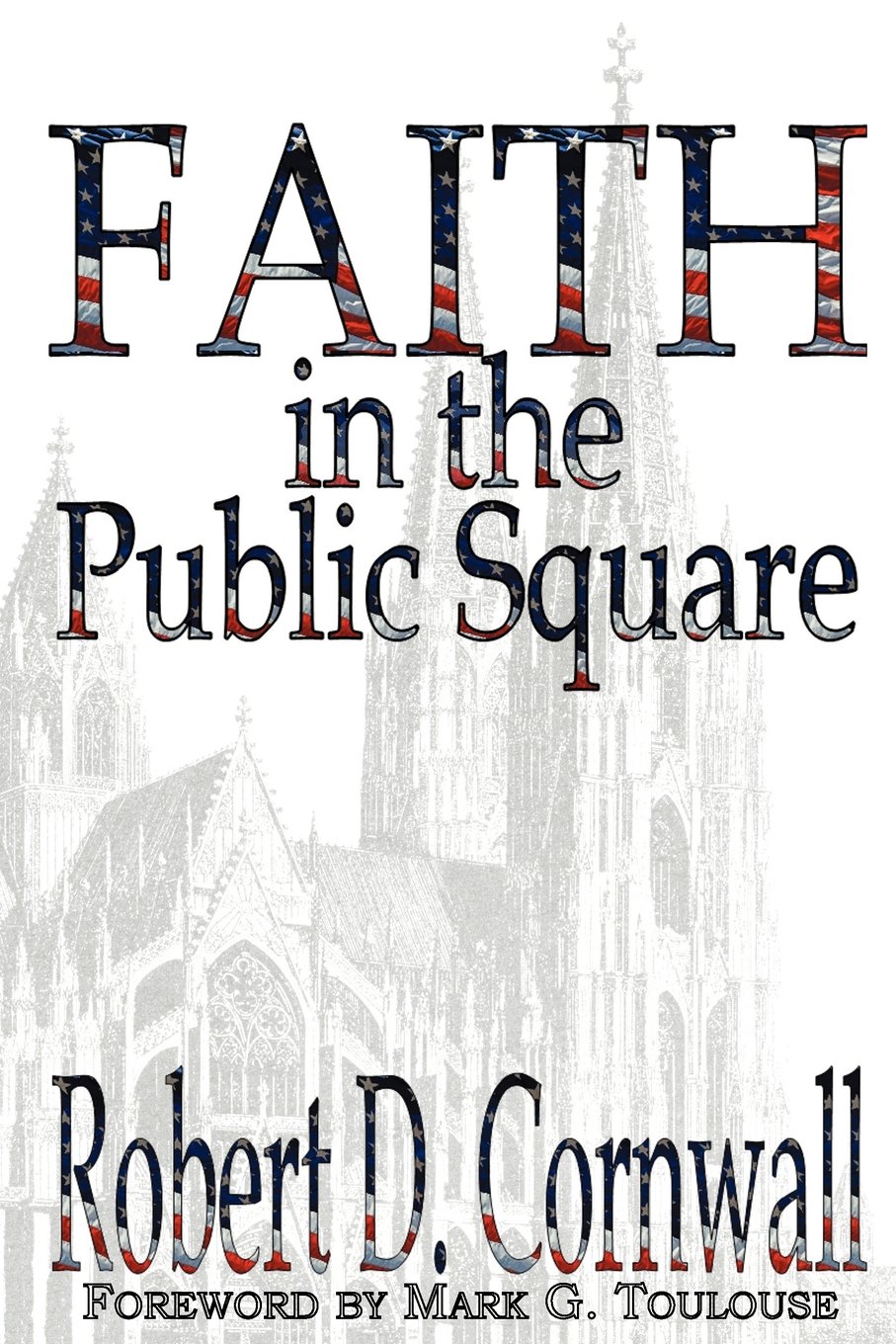
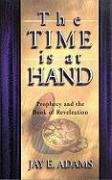

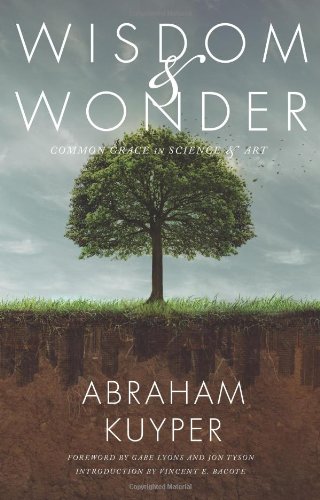
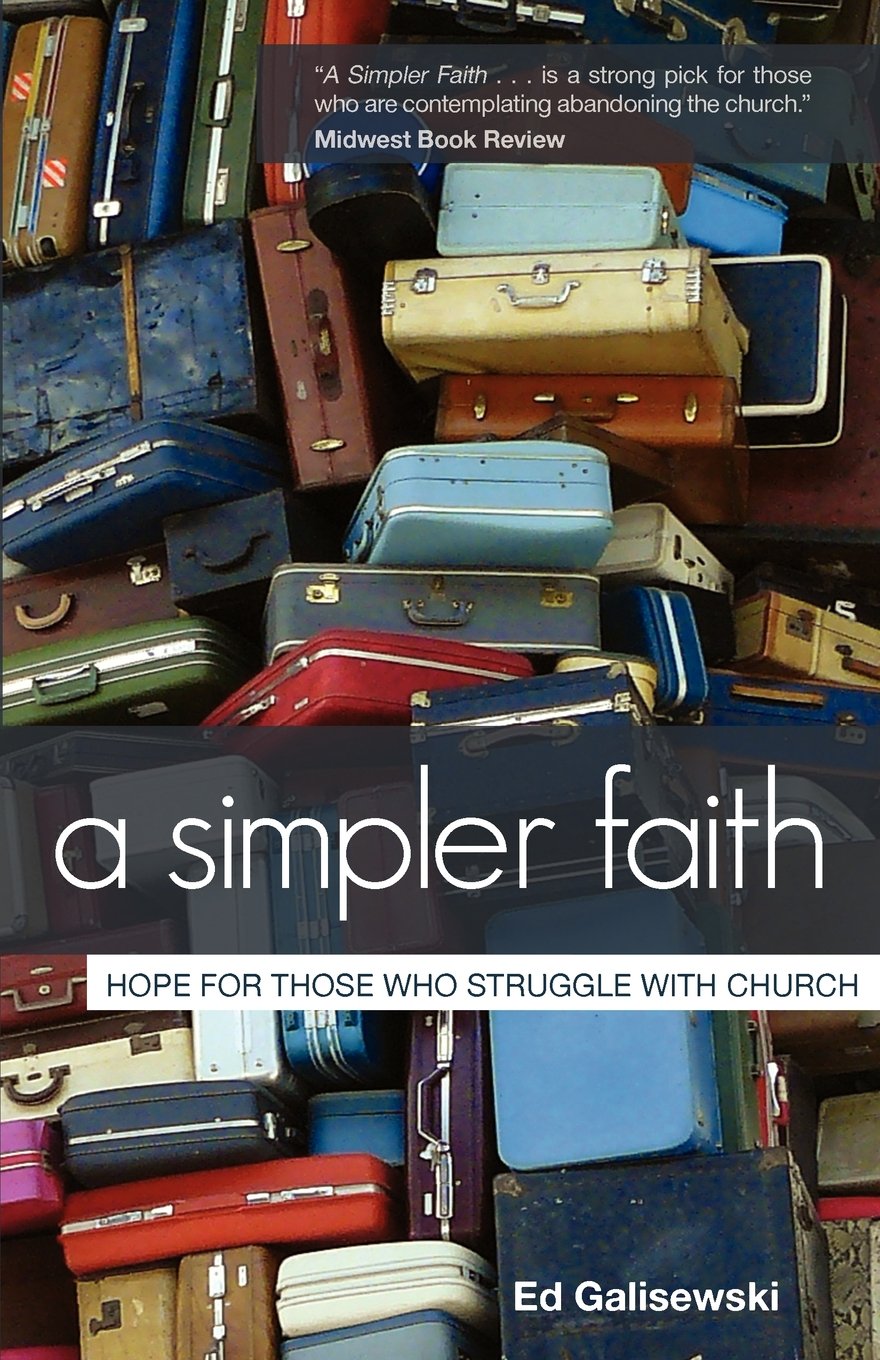

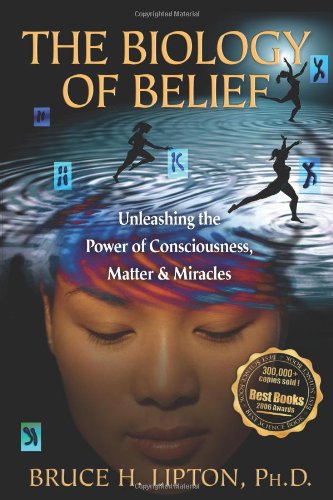
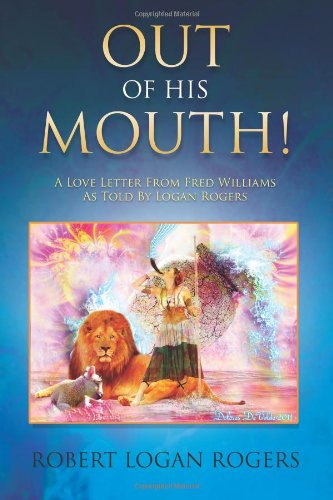




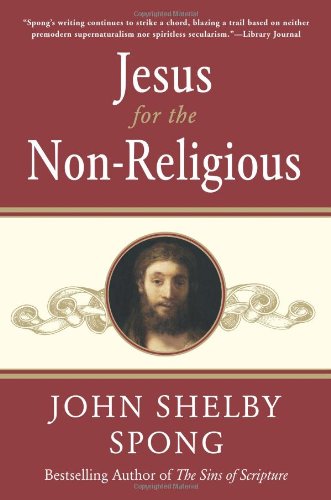
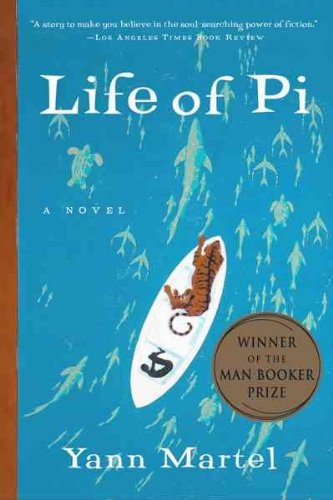
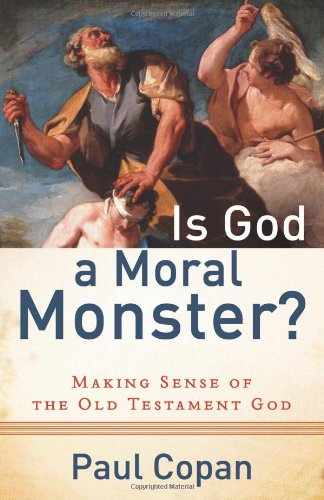

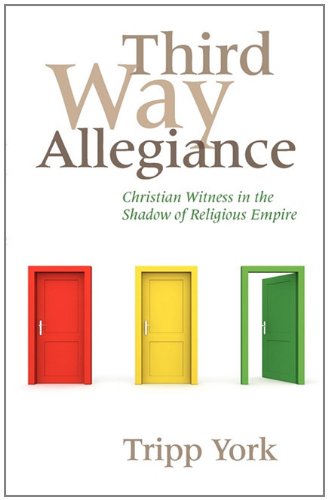
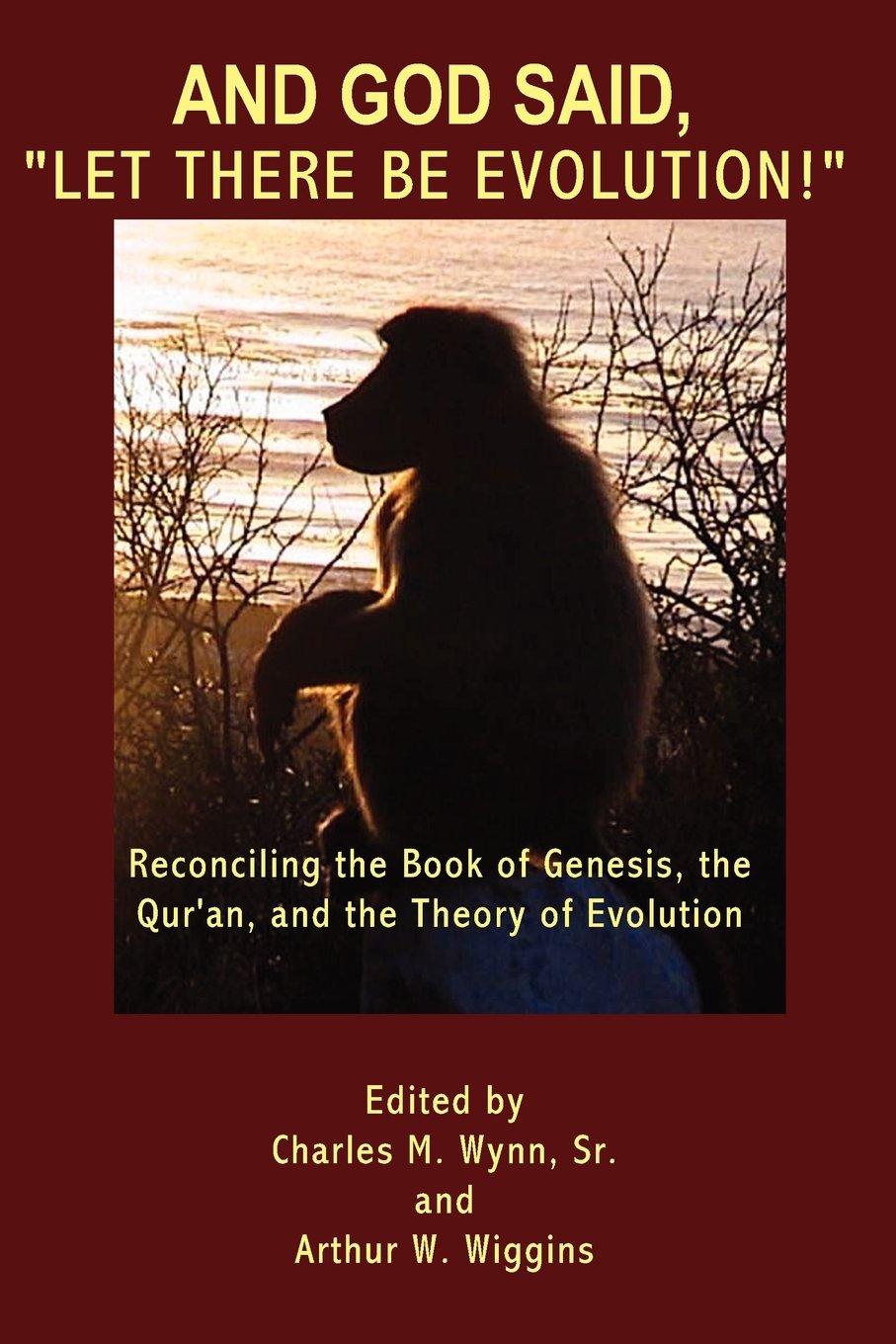
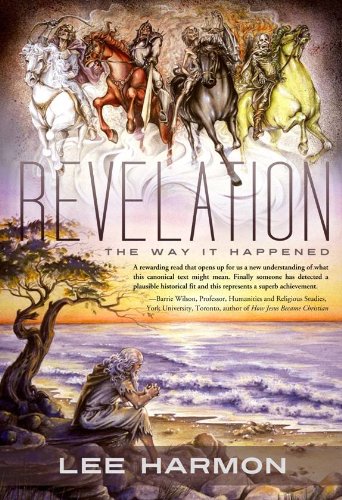









 354 Circles
354 Circles
 603 Goodreads Friends & Fans
603 Goodreads Friends & Fans

 Hello! I'm an author, historical Jesus scholar, book reviewer, and liberal Christian, which means I appreciate and attempt to exercise the humanitarian teachings of Jesus without getting hung up on any particular supernatural or religious beliefs.
The Bible is a magnificent book that has inspired and spiritually fed generations for thousands of years, and each new century seems to bring a deeper understanding of life’s purpose. This is true of not only Christianity; through the years, our age-old religions are slowly transforming from superstitious rituals into humanitarian philosophies. In short, we are growing up, and I am thrilled to be riding the wave.
I avidly read all thought-provoking religion titles. New authors: I'd love to read and review your book!
Hello! I'm an author, historical Jesus scholar, book reviewer, and liberal Christian, which means I appreciate and attempt to exercise the humanitarian teachings of Jesus without getting hung up on any particular supernatural or religious beliefs.
The Bible is a magnificent book that has inspired and spiritually fed generations for thousands of years, and each new century seems to bring a deeper understanding of life’s purpose. This is true of not only Christianity; through the years, our age-old religions are slowly transforming from superstitious rituals into humanitarian philosophies. In short, we are growing up, and I am thrilled to be riding the wave.
I avidly read all thought-provoking religion titles. New authors: I'd love to read and review your book!
 Hi! While Lee writes the articles and reviews the books, I edit, organize, and maintain the blog. The views expressed here are Lee's but I'm his biggest supporter! :-)
Hi! While Lee writes the articles and reviews the books, I edit, organize, and maintain the blog. The views expressed here are Lee's but I'm his biggest supporter! :-)
Connect With Me!